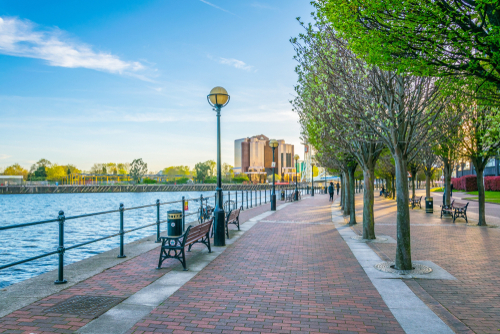
Transport for Greater Manchester (TfGM) in England has joined with local councils, 10GM, Arup, and Sustrans – a cycling and walking charity – to design ten low traffic neighborhoods (also called “Active Neighborhoods”) across the Greater Manchester city region.
Active Neighborhoods prioritize the movement, health, and safety of people over cars. They include the installation of benches, planters or bollards to reduce traffic on residential streets to promote walking and cycling, and create quieter, more attractive places for residents to enjoy.
The city conducted a study of traffic patterns in selected residential neighborhoods and found a prevalence of what they call rat-running – driving on residential streets to avoid heavy traffic. The Active Neighbourhood project hopes to reduce total vehicle journeys, while redirecting ‘rat running’ traffic away from local residential streets. Installing strategically placed filters (such as planters) on residential streets should reduce through traffic while still retaining access to all properties for residents, businesses, maintenance vehicles, and emergency services.
The city hopes that the measures will encourage people to walk or cycle for short trips, reduce local, air pollution,improve local walking and cycling routes, and make it easier and safer to reach bus stops and train stations on foot or by bike. The city is also working with schools to explore and trial ‘School Streets’, where busy roads surrounding schools may be closed at certain times of day.
“Local councils now have the unique opportunity to create long-term behaviour change, in which active transport becomes the norm, by putting the right infrastructure in place across the UK’s cities,” added James Tate, active neighbourhoods project manager, Arup. “That’s why we are really excited to be delivering TfGM’s Active Neighbourhoods project, focusing on the need to design residential streets that allow people to access local facilities and public transport by foot and by cycle, and delivering the health, air quality and safety benefits of reduced road traffic. We are confident the project will help deliver a huge range of improvements for the Greater Manchester city-region.”
The Active Neighbourhood in Manchester is part of the Bee Network – a 10-year plan for the city to createthe UK’s largest joined-up cycling and walking network. Active neighbourhoods are funded through the Mayor’s Challenge Fund.